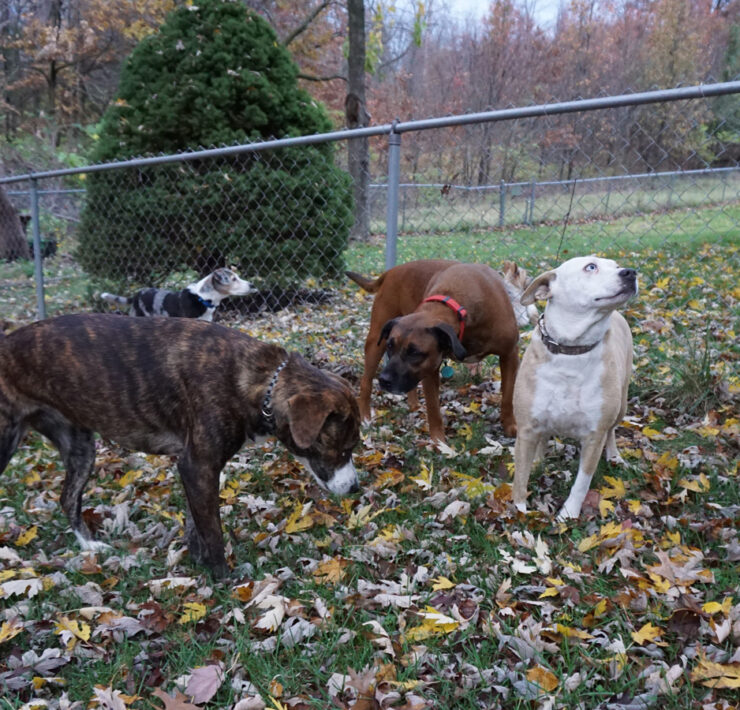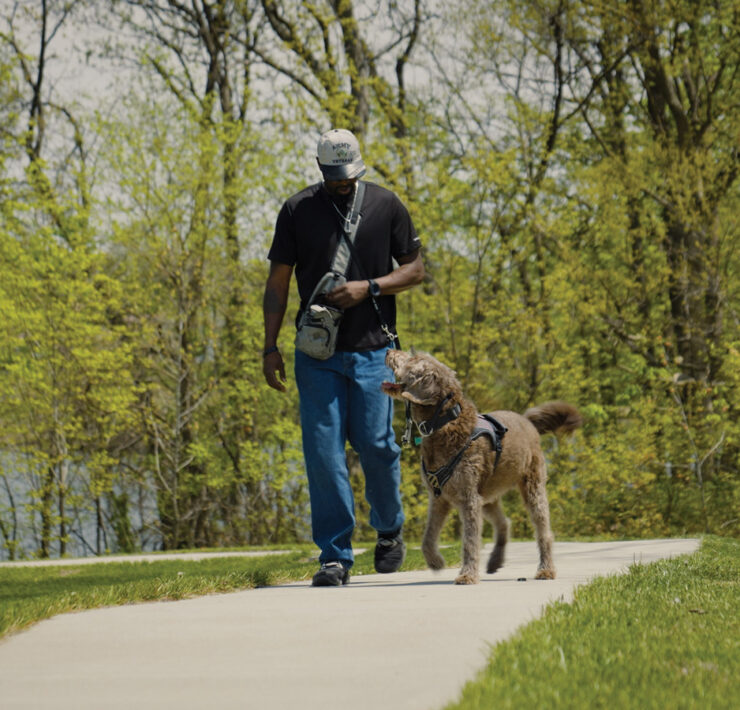Corralling Cats on the Prowl
- "Corralling Cats on the Prowl" originally appeared in the February 2025 "Passion Project" issue of COMO Magazine.
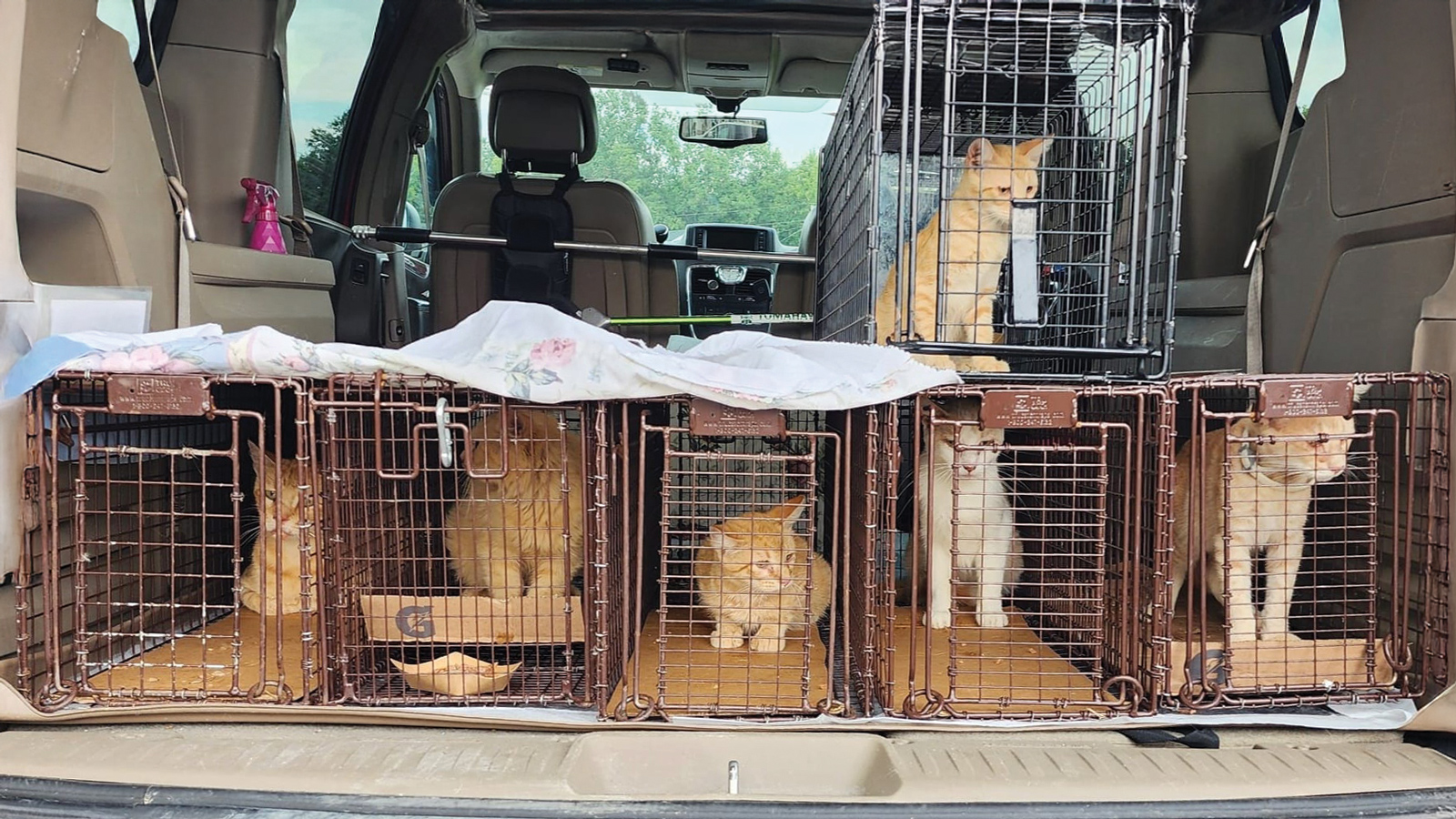
All about TNR — trap, neuter, and release.
Barnie was lost or abandoned. He looked and acted like any other stray cat, frightened of humans but ready to start — or end — a fight with other stray felines. That’s what finally led to a call to a cat rescue group that intervened, told the homeowner about the trap, neuter, and release process, then set traps. And Barnie’s fighting days were over.
Barnie tested positive for feline aids, which he contracted due to fighting. Following the TNR protocol, Barnie was neutered, given a rabies shot, had his ear clipped (a tell-tale mark that indicates a stray has been TNR’d), and he was tested for a variety of diseases. The standard procedure at that point is releasing the cat back into its habitat, but the weather delayed Barnie’s release.
Instead, Diann Stelzer took Barnie into her care. After several months of gaining trust with one another, Barnie slowly socialized and became a beloved family pet. As a result of that experience, Barnie’s Place Feline Rescue was born. Stelzer is the president and director. Before Barnie died, Stelzer promised him that she would continue to take care of other cats that many would deem as unadoptable.
In the United States, 46.5 million households have at least one cat as a pet. Millions of cat owners enjoy pampering their furry friends with fluffy beds, toys, and treats. Even though Americans love their pets, there are an estimated 32 million cats roaming the streets without a home — and that number is rapidly rising.
What is the cause of cat displacement? Why are there so many? And why does the number of stray cats keep rising?
“It’s a human failure” said Connie Kelly, vice president of Barnie’s Place Feline Rescue, “This is really a people problem — not a cat problem. The cats are seen as the problem, but this is generated by people not doing the right thing. This is a dysfunction of our society not taking proper care of these animals. We need to take responsibility for them.”
Some might view these feral cats as a nuisance, but resources in the Columbia area are trying to spread awareness on how to actively help reduce the feral cat population in the most humane way. After all, some of these cats used to be someone’s pet that got lost or abandoned by their owners.
One increasingly effective and humane way to reduce the community cat population is by trap, neuter, and release, or TNR. Alley Cat Allies, a national organization based in Maryland, promotes the concept that “scientific studies show that Trap-Neuter-Return improves the lives of feral cats, improves their relationships with the people who live near them, and decreases the size of colonies over time.”
Stabilizing Cat Colonies
Barnie’s Place Feline Rescue is passionate about helping community cats.
“If you don’t get them fixed, they continue to fight, breed, and multiply. TNR improves community health by taking care of these animals,” Kelly said. In addition to stopping the spread of diseases such as rabies, TNR also stops “nuisance behaviors.” She added, “Colonies stabilize after you get these animals fixed. The numbers stop growing. This is really a public health issue.”
Another benefit of TNR is that the mortality rate of kittens drops. The current mortality rate of kittens born to a community cat is 70 percent, and even higher in the winter months. Some residents and homeowners have expressed concerns about feral or community cats killing songbirds.
“We have no shortage of songbirds in Missouri,” Kelly continued. She is also advocating the shift to refer to feral cats as “community cats.” The term “feral” describes behavior but is rife with negative connotations that many use to condemn stray cats. Along with focusing much of its effort on TNR, Barnie’s Place will also help community cats who are injured.
For those who are concerned about community cats killing the songbirds that come to bird feeders, Christina Byrd counters that community cats are a valuable predator to keep rodent populations in check. Rodents prey on bird eggs and bird seed, and can also spread disease.
Byrd, the TNR lead with Columbia Second Chance, said there are ways to protect birds if that is a concern, while there is also a humane way to trap and then release the cats.
“They are out there suffering without our help,” Kelly said. “They don’t deserve to suffer.”
Kelly and Byrd both express the “thrive and not just survive” mantra that guides their passion, describing how community cats are suffering from diseases, parasites, and complications through inbreeding. One female cat can have four litters a year, leading to a rapid increase in health complications. Female cats with kittens are also fearful, stressed, and usually plagued with health issues.
One of the biggest issues facing the TNR volunteers is that Columbia needs more low-cost spay/neuter vets. Even organizations like the Spay and Neuter Project are overburdened with how many animals are brought there. There is sometimes a wait list and a limited number of animals an individual can bring in.
In order to trap the cats, the cats must be fed on a consistent basis, which can create an annoyance to neighbors. Byrd blames public policy, in part, for the issue.
“The city ordinances on feral cats is ridiculous,” she said, pointing out that city ordinance states that if someone wants to feed a feral colony, they must apply for a permit. In order to get approved for the permit, the applicant must trap and spay or neuter the cats and have them vaccinated against rabies.
“No one is going to do this,” Byrd said. She noted that the expenses associated with taking care of community cats is “nearly impossible for the average person.” To Byrd’s knowledge, in the thirteen years the ordinance has been in place, only one permit has been granted. Although acquiring a permit to feed community cats is difficult to get, those who take on TNR run the risk of being fined for feeding the cats.
If laws were easier to follow for addressing the community cat issue, Byrd said, the stray cat population would continue to decrease.
By her count, Byrd trapped seventy-five cats in a year and a half in a two-block radius. She has assisted in catching over 200 cats during the past two years; the first year by herself and then a couple of volunteers started helping her. In 2024, she TNR’d 215 cats. Some of them went to rescues because they were friendly or kittens that could easily be socialized, although 146 of them were TNR’d.
Another problem is that shelters are full. One way people can help is by fostering. Byrd has fostered 210 cats and kittens.
Bobbi Wilson, owner of Peace Love Paws Pet Sitters, described her experience helping with TNR.
“There is a component of compassion missing for these cats — it is compassionate to get them spayed and neutered,” she said “The most effective way to get these cats spayed or neutered is to trap them. A lot of people are scared of the cats because [trapping] freaks the cats out. People want to help trap cats, but they are scared to do it because of the traps; they don’t know how to properly trap.”
“You can sit there and complain about the feral cats, or you can do something to help,” Kelly added. “Thankfully, there are effective and humane ways to help with the stray cat problem.”
For those who want to take on TNR in their neighborhoods, Byrd recommends contacting the Central Missouri Humane Society or Columbia Second Chance, which both have humane traps for rent. Byrd is also willing to help if contacted at [email protected]. She will provide instructions on how to trap and where neuter/spay surgeries are available. Byrd also may be able to provide personal assistance for someone wanting to join the TNR process.
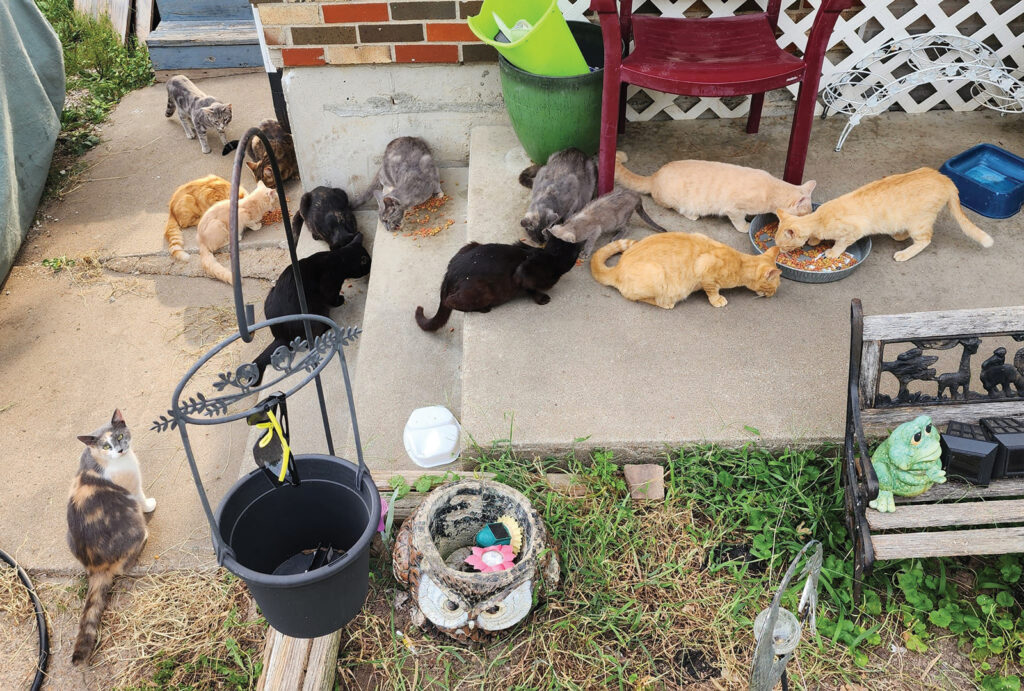
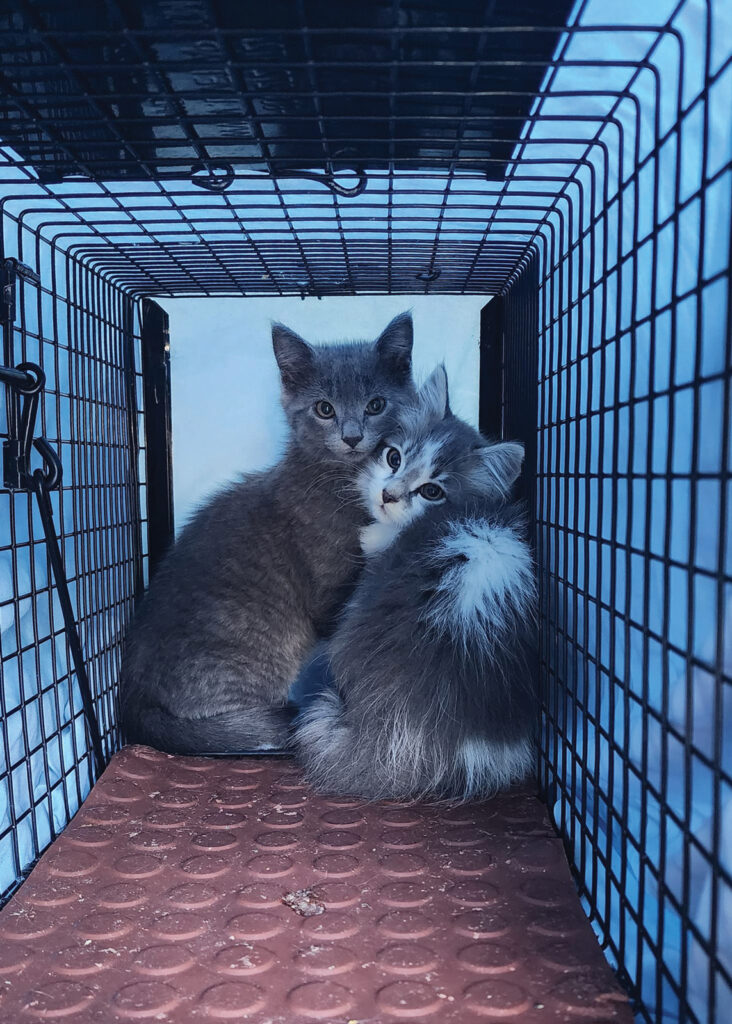
Editor’s Note: If you are hesitant to help with TNR, you can help spread awareness by educating yourself, sharing posts from these rescues on social media, volunteering your time in other ways at animal shelters or at Petco/Petsmart locations as caretakers, donating, or fostering community cats.



